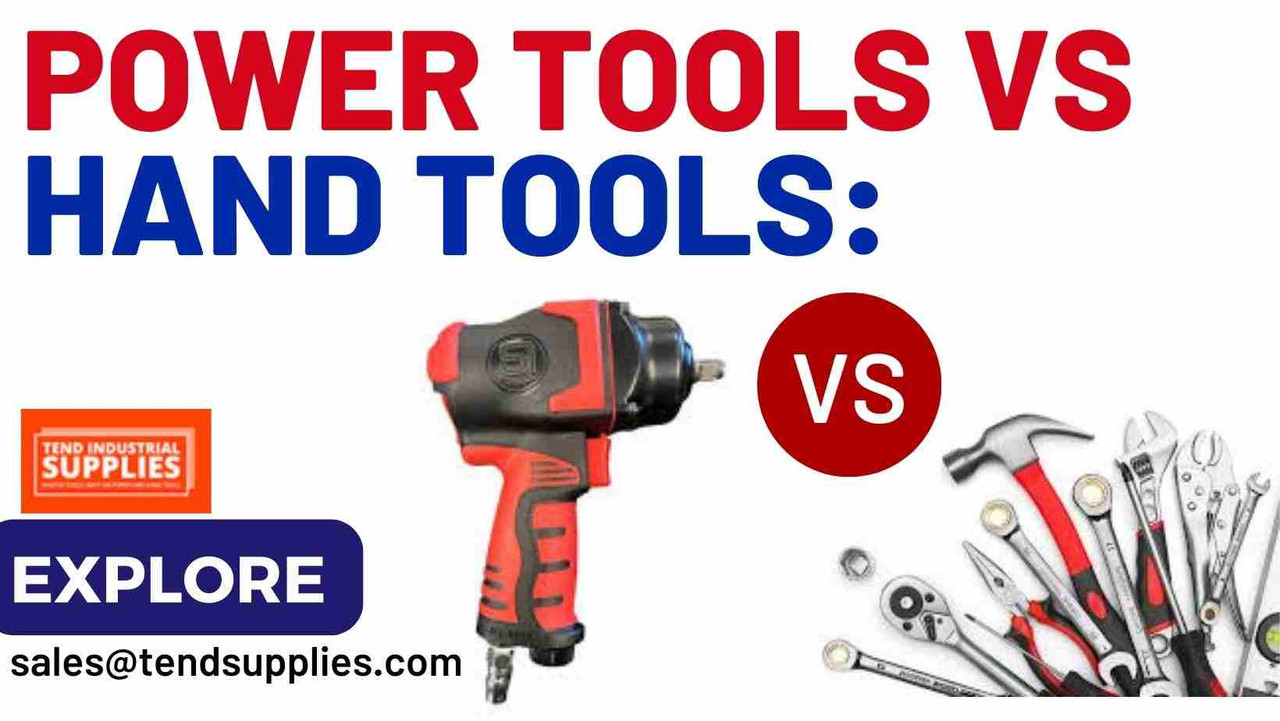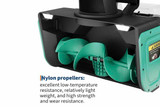Power Tools vs Hand Tools: Which is Right for You?
Power Tools vs Hand Tools: Which is Right for You?
Confused about power tools vs hand tools? This guide will help you determine which is best for your project needs. Find out now. When it comes to DIY projects, choosing the right tools can be the difference between success and frustration. Power tools and hand tools each have their own advantages and disadvantages, and the right choice depends on the specific project, your skill level, and budget. In this article, we will compare power tools and hand tools, discussing their strengths and weaknesses, so that you can make an informed decision on which type of tool is right for you. Power tools and hand tools are two types of tools that are commonly used in construction, woodworking, and DIY projects. Both have their advantages and disadvantages, and it's essential to understand the difference between them to make an informed decision about which tool to use for a particular job. THE GZ TEAM previously reviewed the difference between power tools and hand tools along the line of features of the tool, one of the crucial take away from that article is that Hand tools are relatively safer than power tools – mainly because of their lack of power and automation. However, you can still get injured using both types of tools. But power tool injuries are severe when compared to hand tools.
Power tools
Power tools air powered or electric or battery-powered tools that use motors to perform tasks such as drilling, sawing, sanding, and screwing. A pneumatic tool, air tool, air-powered tool or pneumatic-powered tool is a type of power tool, driven by compressed air supplied by an air compressor. These tools are designed to make jobs easier, faster, and more efficient. Power tools are often more expensive than hand tools, but they can save time and energy, especially for larger projects or jobs that require a lot of repetition.
Hand Tools
Hand tools, on the other hand, hand tools are powered by manual labor, such as hammers, screwdrivers, pliers, and saws. These tools have been used for centuries and have been the mainstay of many trades.
Hand tools Vs Power tools
Hand tools are often less expensive than power tools and do not require a power source, making them an excellent choice for outdoor projects or jobs in remote locations. One of the most significant advantages of power tools is their speed. Power tools can complete tasks in a fraction of the time it would take to do the same job with a hand tool. For example, a power drill can complete a hole in a few seconds, while a hand drill may take several minutes to achieve the same task. This speed advantage is significant for contractors who must complete large projects quickly and efficiently. Another advantage of power tools is their precision. This precision is particularly useful for jobs that require accuracy, such as cutting or drilling into a specific material. Power tools are equipped with adjustable speeds and settings that allow users to achieve precise results. Hand tools, on the other hand, offer greater control and flexibility. Hand tools are easier to manoeuvre in tight spaces and are better suited for tasks that require a delicate touch, such as working with soft materials or intricate details. Hand tools also offer precision that power tools cannot match, making them an excellent choice for tough tasks that require a steady hand. Power tools are also more convenient than hand tools in many cases. They can be used without manual effort, making them an excellent choice for tasks that require repetitive motion. Power tools are also often equipped with safety features such as guards and switches that help prevent accidents.
However, power tools have their disadvantages. Hand tools are often more expensive than hand tools, and they require a power source, making them less portable. Power tools can also be heavy and bulky, making them less convenient to carry and store. Additionally, power tools require regular maintenance and replacement parts, adding to their overall cost of ownership.
Hand tools, on the other hand, are often less expensive than power tools and do not require a power source, making them an excellent choice for outdoor projects or jobs in remote locations. Hand tools are also often lighter and more compact than power tools, making them easier to store and transport.
Examples of power tools
- Circular Saw: This is a versatile tool that can be used for a variety of tasks, including ripping, crosscutting, and bevel cutting. It’s a powerful and fast tool that can save you a lot of time, but it’s also loud and requires access to an electrical outlet.
- Drill: A drill is an essential tool for any DIYer. It’s useful for making holes and driving screws, and it’s much faster than using a hand drill. However, it’s also louder and requires access to an electrical outlet.
- Jigsaw: This is a tool that’s used for making curves and intricate cuts. It’s fast, versatile, and powerful, but it’s also noisy and requires access to an electrical outlet.
- Sander: A sander is a power tool that’s used to smooth and refine the surface of wood or metal. It’s fast, efficient, and saves a lot of time, but it’s also loud and requires access to an electrical outlet.
- Router: A router is a powerful tool that’s used for cutting and shaping wood. It’s fast, precise, and versatile, but it’s also loud and requires access to an electrical outlet.
Advantages of Power Tools
- Speed: Power tools can complete a task in a fraction of the time it would take with hand tools. For example, a power drill can make a hole in seconds, while a hand drill could take minutes.
- Power: Power tools offer more power and torque than hand tools, making them ideal for tough tasks such as cutting through thick materials or removing stubborn screws.
- Consistency: Power tools produce consistent results, which is important for projects that require accuracy, such as making precise cuts.
- Versatility: Power tools come in a wide range of shapes and sizes, making them suitable for a variety of projects. They can also be fitted with different attachments and accessories, increasing their versatility even further.
Disadvantages of Power Tools
- Cost: Power tools are typically more expensive than hand tools, especially for professional-grade models.
- Complexity: Some power tools can be complex to operate and require special training. This can make them less suitable for inexperienced users or those who only need them for occasional use.
- Maintenance: Power tools require regular maintenance and cleaning, which can be time-consuming and costly.
- Noise: Power tools can be loud and disruptive, making them less suitable for use in residential areas or when working in close proximity to others.
Hand Tools
Hand tools are manual tools that are operated by hand and do not require an electrical source. They are often preferred for their simplicity, durability, and affordability.
Examples of hand tools
- Handsaw: A handsaw is a traditional woodworking tool that’s used for cutting wood. It’s quiet, portable, and doesn’t require access to an electrical outlet, but it’s also slower and less precise than a power saw.
- Hand Drill: This is a traditional woodworking tool that’s used for making holes and driving screws. It’s quiet, portable, and doesn’t require access to an electrical outlet, but it’s also slower and less precise than a power drill.
- Chisels: Chisels are hand tools that are used for shaping and removing material from wood or metal. They’re quiet, portable, and precise, but they also require more effort and skill to use than power tools.
- Plane: A plane is a hand tool that’s used for smoothing and shaping wood. It’s quiet, portable, and precise, but it also requires more effort and skill to use than a power sander.
- Hammers: Hammers are hand tools that are used for driving nails and breaking apart materials. They’re quiet, portable, and don’t require access to an electrical outlet, but they’re also less precise than power tools like a nail gun.
Advantages of Hand Tools
- Cost: Hand tools are generally less expensive than power tools, especially for basic models.
- Simplicity: Hand tools are easy to use and maintain, making them ideal for inexperienced users or those who only need them for occasional use.
- Durability: Hand tools are made to last and can withstand heavy use, making them a good investment in the long term.
- Versatility: Hand tools come in a wide range of shapes and sizes, making them suitable for a variety of projects.
Disadvantages of Hand Tools
- Speed: Hand tools are slower than power tools and can take longer to complete a task.
- Physical Effort: Hand tools require manual effort and can be tiring to use, especially for tasks that require a lot of strength.
- Consistency: Hand tools can produce inconsistent results, making them less suitable for projects that require accuracy.
In conclusion, power and hand tools each have advantages and disadvantages. Power tools are faster, more precise, and offer greater convenience, but they are also more expensive and less portable. Hand tools are less expensive, more mobile, and provide greater control and flexibility, but they are also slower and require more manual effort. Understanding the difference between power tools and hand agencies is essential for making informed decisions about which tool to use for a particular job.









